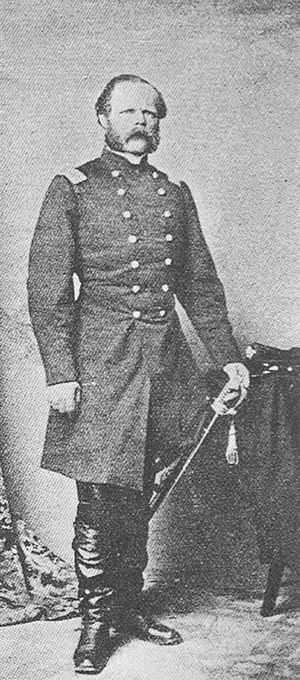Frederick W. von Egloffstein facts for kids
Frederick Wilhelm von Egloffstein (May 18, 1824 – February 18, 1885) was a talented German-born explorer, mapmaker, and artist. He was also a military officer. He is famous for being the first person to use a special method to create engravings. This method combined ruled glass screens with photography.
Contents
Life and Adventures
Early Life and Family
Friedrich Ernst Sigmund Kamill von Egloffstein was born in Egloffstein, Germany. He was the fifth son of Baron Wilhelm von Egloffstein. His family's castle, from which they got their name, overlooked the village. His father was a forestry officer in Bavaria.
In 1846, Egloffstein was a lieutenant in the Prussian army. He left Germany that year and moved to the United States. In 1848, he briefly returned to Germany to marry Irmgard von Kiesenwetter. They had several children.
Adventures in America
Egloffstein arrived in Baltimore in 1846. He first worked in New Orleans, creating posters for houses. By 1852, he was surveying land and publishing maps in St. Louis, Missouri. He even made a map of Bellefontaine Cemetery. He also became friends with a famous botanist, George Engelmann.
Exploring the West
Egloffstein joined John C. Frémont's expedition to the American West in 1853-54. He worked as a topographer, which means he mapped the land. After facing tough conditions, he left the expedition in Parowan, Utah. He then joined another group, the Gunnison–Beckwith Expedition. For this group, he created maps and panoramas of Utah, Wyoming, Nevada, and California. These were later published in important government reports.
After these expeditions, Egloffstein moved to Washington, D.C.. There, he helped prepare the Pacific Railroad Reports. He also started experimenting with new ways to draw landscapes. He would take photos of plaster models to show how terrain looked.
Grand Canyon Expedition
In 1857-58, Egloffstein was one of the artists on the Joseph Christmas Ives expedition. This trip explored the Colorado River, including parts of the Grand Canyon. The official report of this expedition was published in 1861. It was one of the first detailed descriptions of the Grand Canyon's inner areas.
Egloffstein's maps from this trip are considered some of the best of his time. He used a special printing method he invented. The report also included his engravings and drawings of the "Big Caňon." Some of his drawings, like "Black Caňon," were later found to be of the Gunnison River in Colorado, not the Grand Canyon. It seems these drawings were mistakenly included in the Grand Canyon report.
Civil War Service
When the American Civil War began in 1861, Egloffstein was living in New York City. He helped create a military unit called the 103rd New York Volunteer Infantry. He was elected as their colonel. His military career ended when he was seriously wounded in North Carolina in 1862. He later received a special honorary rank of brigadier general in 1865.
During the war, he also made a large map of the Four Corners region. This map showed the routes of all major explorations in that area up to that time. In 1864, he published a study about the mineral resources of Mexico. His maps for this book were excellent examples of color map-making.
Egloffstein also invented a way to create printing plates using photography. He tried to make money from this invention in the 1860s and 1870s, but it wasn't very successful. He continued to work as an engraver and model maker until he left America.
Return to Germany
In 1878, Egloffstein returned to Germany. He lived near Dresden. He passed away in 1885. It was determined that his death was a result of an infection from his war wound.



